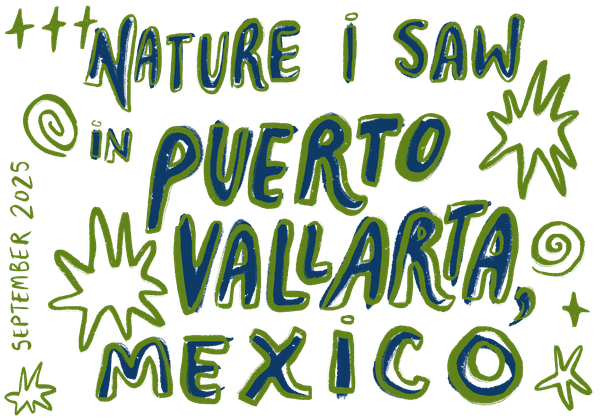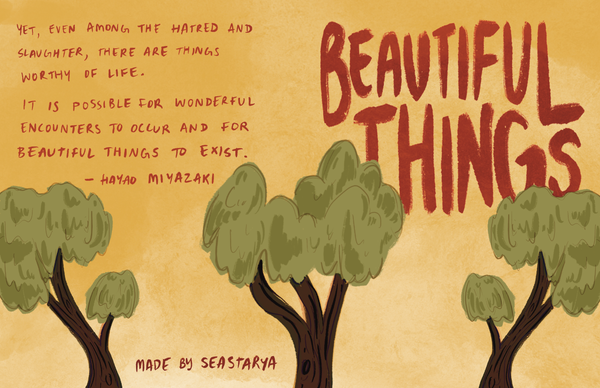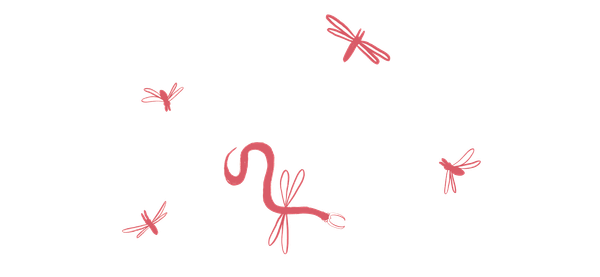birdwatching with ghosts
an essay by Sadie Samuels
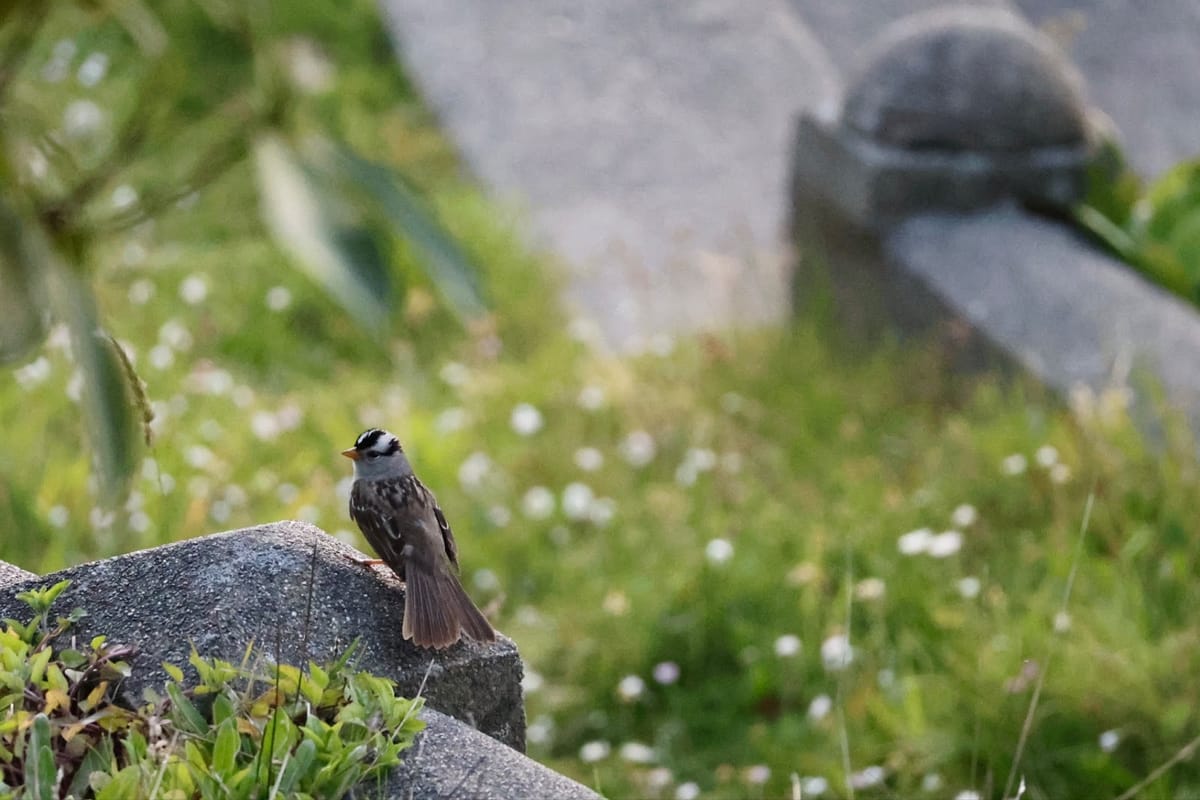
This submission is for the “Nature Loved & Lost” issue of Filter Feeder and will additionally be highlighted in a print zine (coming April 2025). If you’d like to share your work via Filter Feeder in the future, drop me a line!

Recently, I found myself circling a massive oak, attempting to tiptoe my way to the perfect shot of a Northern Flicker. Despite my efforts at stealth, it consistently matched my pace, hopping around the trunk and out of frame. The sun was bright, the breeze carried the smell of incense, and I could hear mourners singing, mingled with birdsong. I was briefly self-conscious about my cartoonish pursuit of a bird in a place set aside for grief, but I was there to honor the dead in my own way.
As a lifelong Spooky Bitch with a graduate degree in archaeology, I’ve been visiting cemeteries for as long as I can remember. But as a newly certified California Naturalist, everything looks a little different. It turns out cemeteries are great places to see local wildlife. From overgrown, neglected historic plots, to sweeping, well-manicured garden cemeteries, final resting places often serve as green oases amongst the urban sprawl.
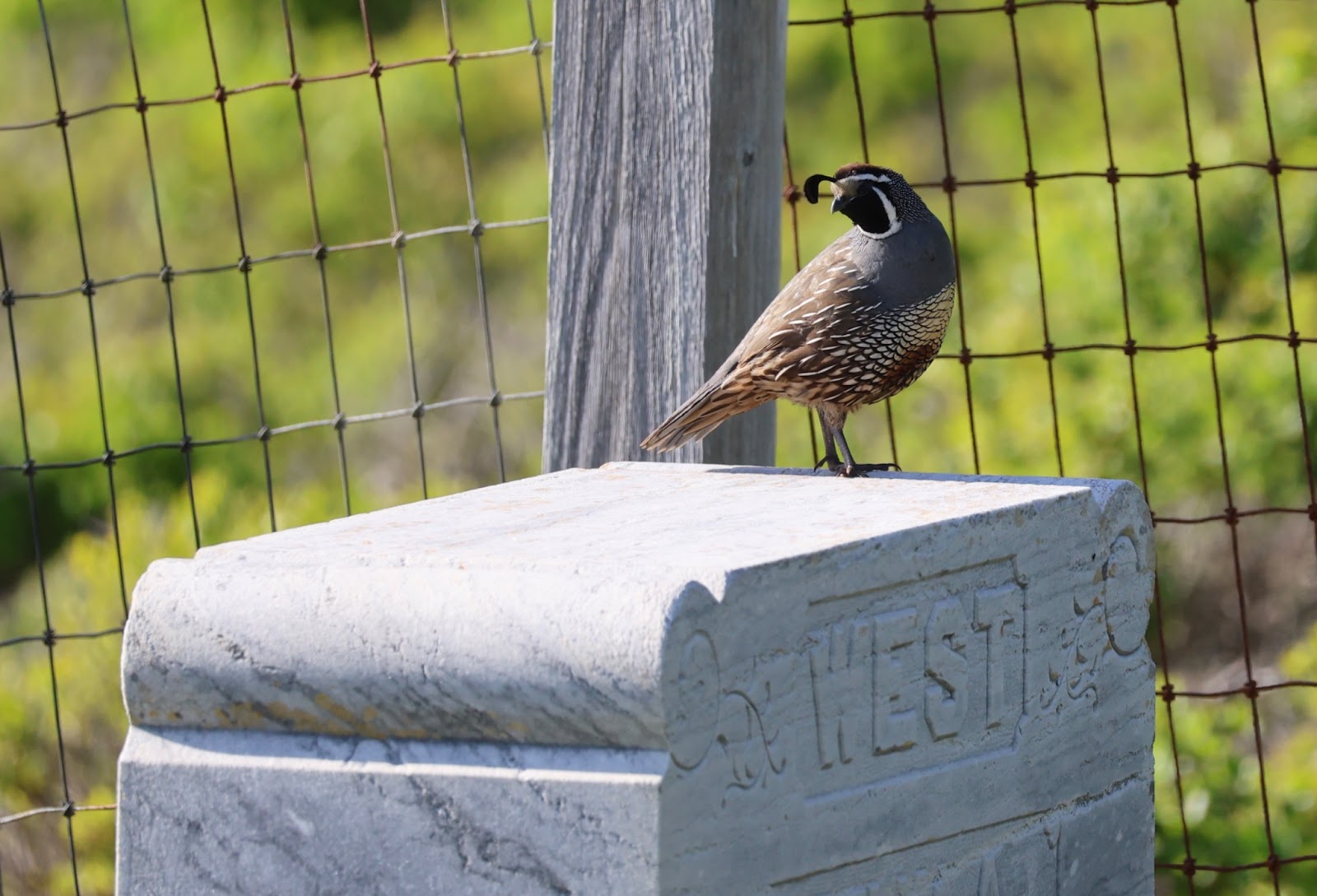
People used to hang out in cemeteries all the time. In 1831, Mount Auburn Cemetery in Massachusetts became the first garden cemetery in the US, kicking off a trend across the country to move away from simple church graveyards and toward elaborate headstones, sculpture, and lush greenery. This style of cemetery was proliferating at a time when public parks and gardens were rare, making them appealing places for folks to congregate. Cemeteries became popular venues for picnics, promenades, and even carriage races. In some cases, so many people were partying in cemeteries (and leaving their empty sardine cans and beer bottles behind), that rules were posted to limit the sanctioned activities. As decades passed, mortality rates decreased, more public green spaces were established, and cultural norms about death shifted. Eventually, spending our leisure time in cemeteries fell out of fashion.
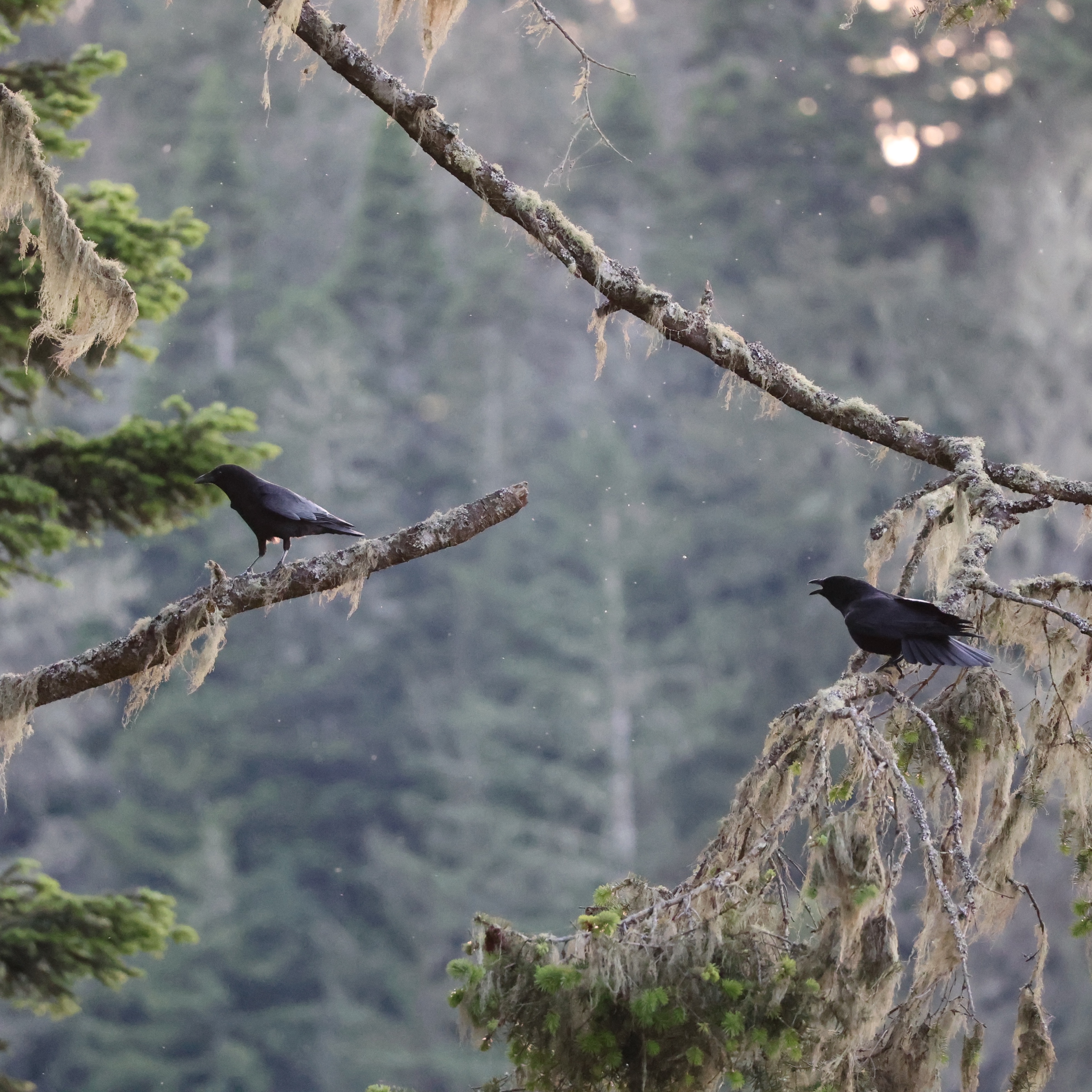
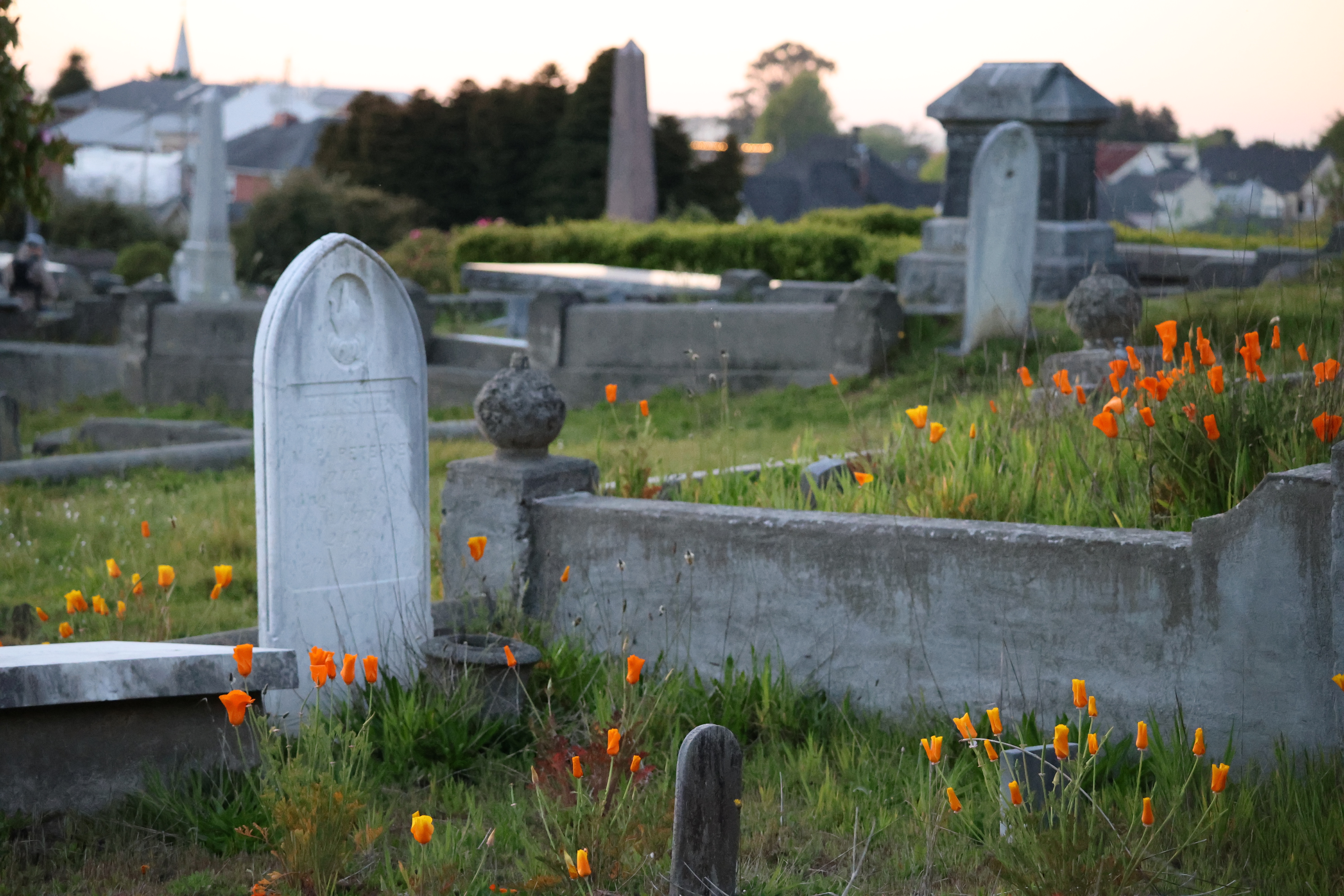
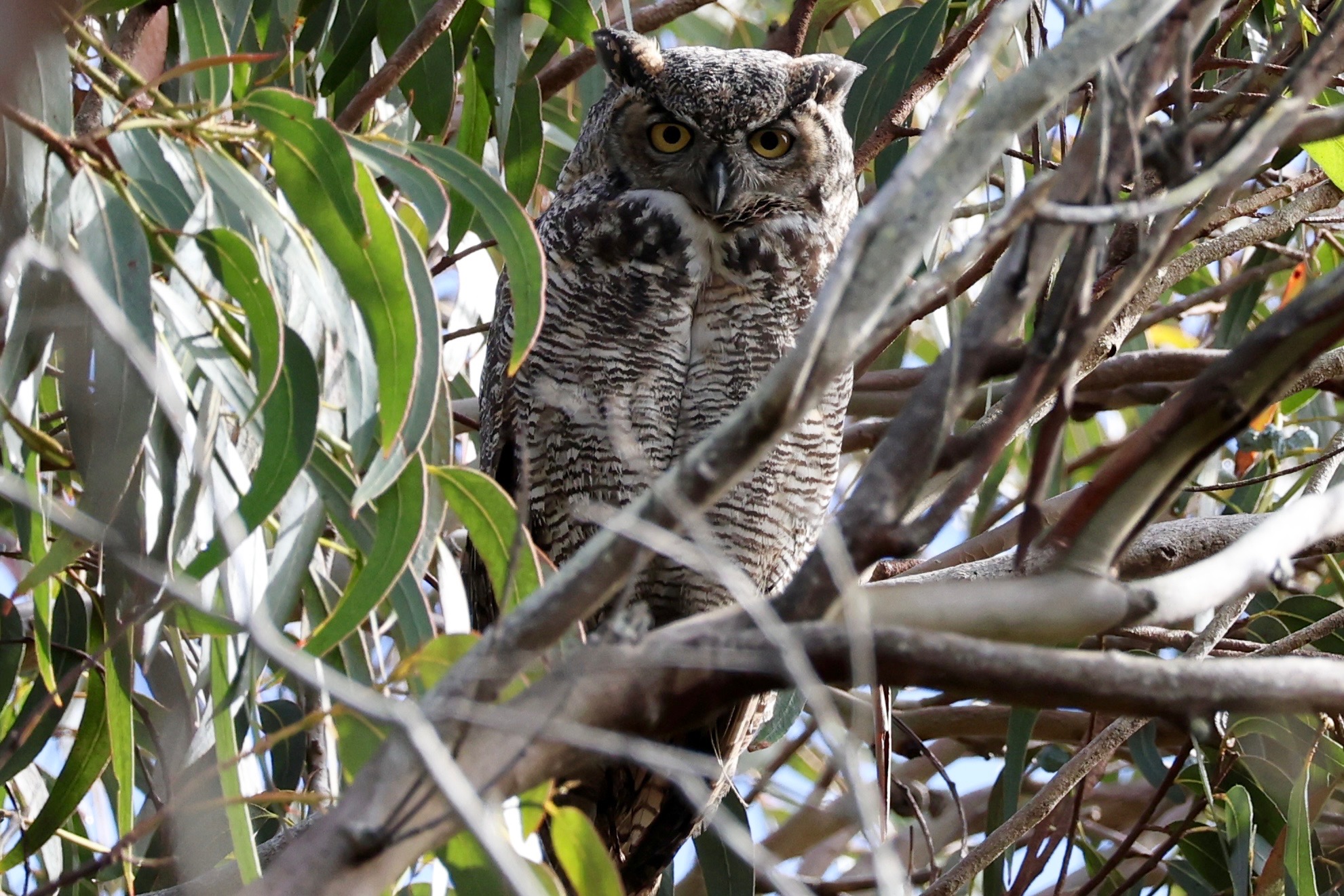
Crows caw at sunset, poppies bloom between headstones, and a Great Horned Owl surveys a historic graveyard.
Today, cemeteries are more commonly places of quiet reflection and memory. That’s one of the things I love about them. Anything can be a sign or a haunting in a cemetery, depending on your mindset, and this atmosphere is perfect for imagination and wonder. Before I ever considered myself a birder, I would wander through the headstones and make up stories about the lives of the people I passed. What did Louisa May do in the decades after her husband passed away? Was Ella Blades the badass assassin her name suggests? Do the first and second Mrs. Strange mind that they have to share this plot and their spouse for eternity? (For that one in particular I like to imagine a sapphic ghost story.) People want to be remembered, and I think we could all benefit from a little more macabre whimsy.
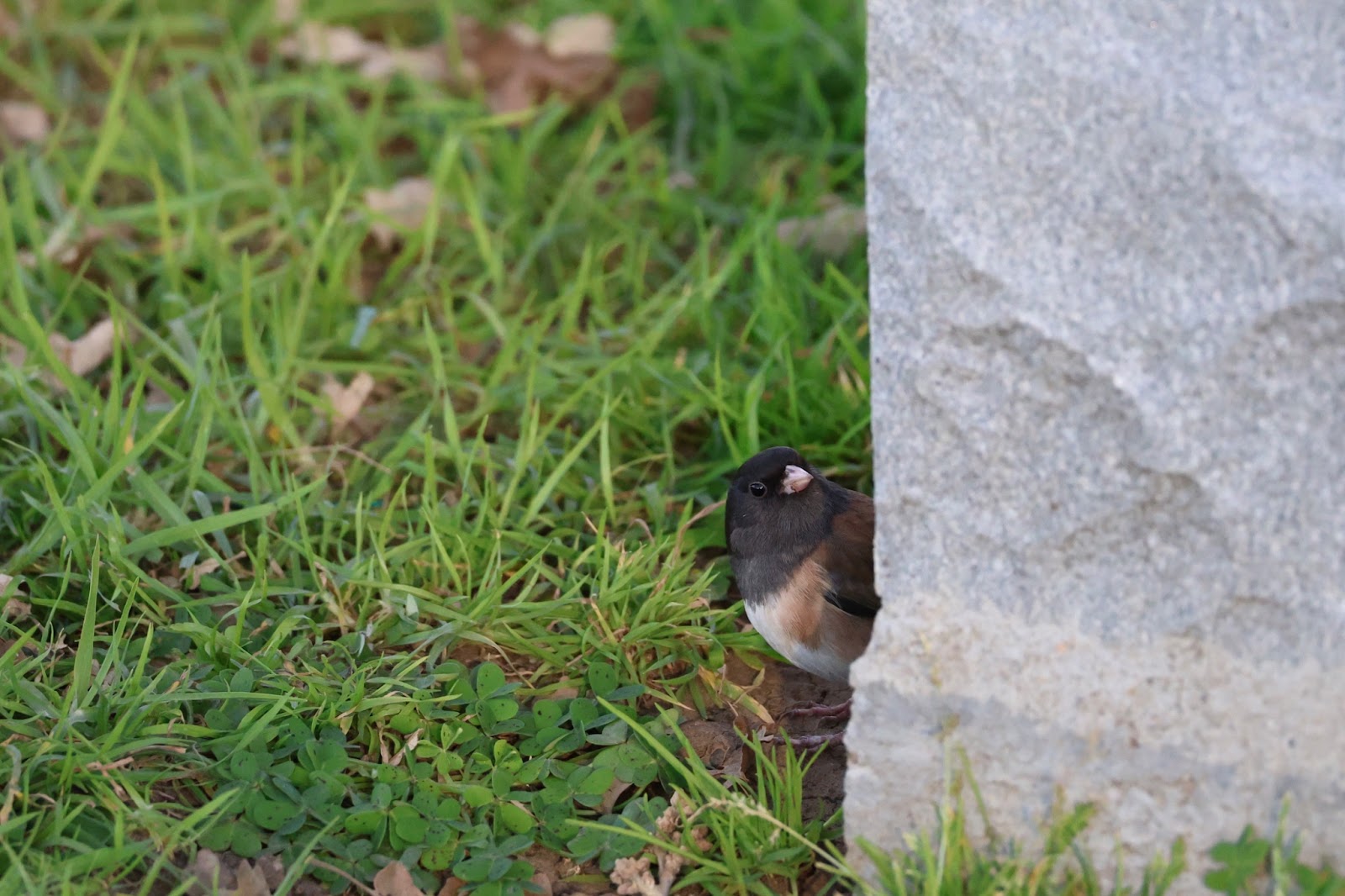
Now, I combine this activity with birdwatching. Since I started paying attention to the wildlife in cemeteries I’ve seen quail, owls, creepers, jays, warblers, woodpeckers, and (briefly) flickers. I update my life list while collecting the names of the dead.
While we’re contemplating mortality, it’s also worth considering the environmental impacts of burial. While cemeteries might contain ponds and fountains convenient for tired waterfowl, or 200-year-old trees loaded with shelter and snacks, they’re still places where native ecosystems were leveled and rebuilt to suit the logistical needs of the dead and the aesthetic expectations of the grieving. The birds that visit cemeteries are doing their best with what we’ve left them. Every year in the US, embalming dumps 800,000 gallons of formaldehyde into the soil, while cremation emits about 360,000 metric tons of carbon dioxide. As new forms of green burial become more accessible, I hope the future of cemeteries includes more native plants and fewer pollutants, more opportunities for renewal and fewer stark endings.
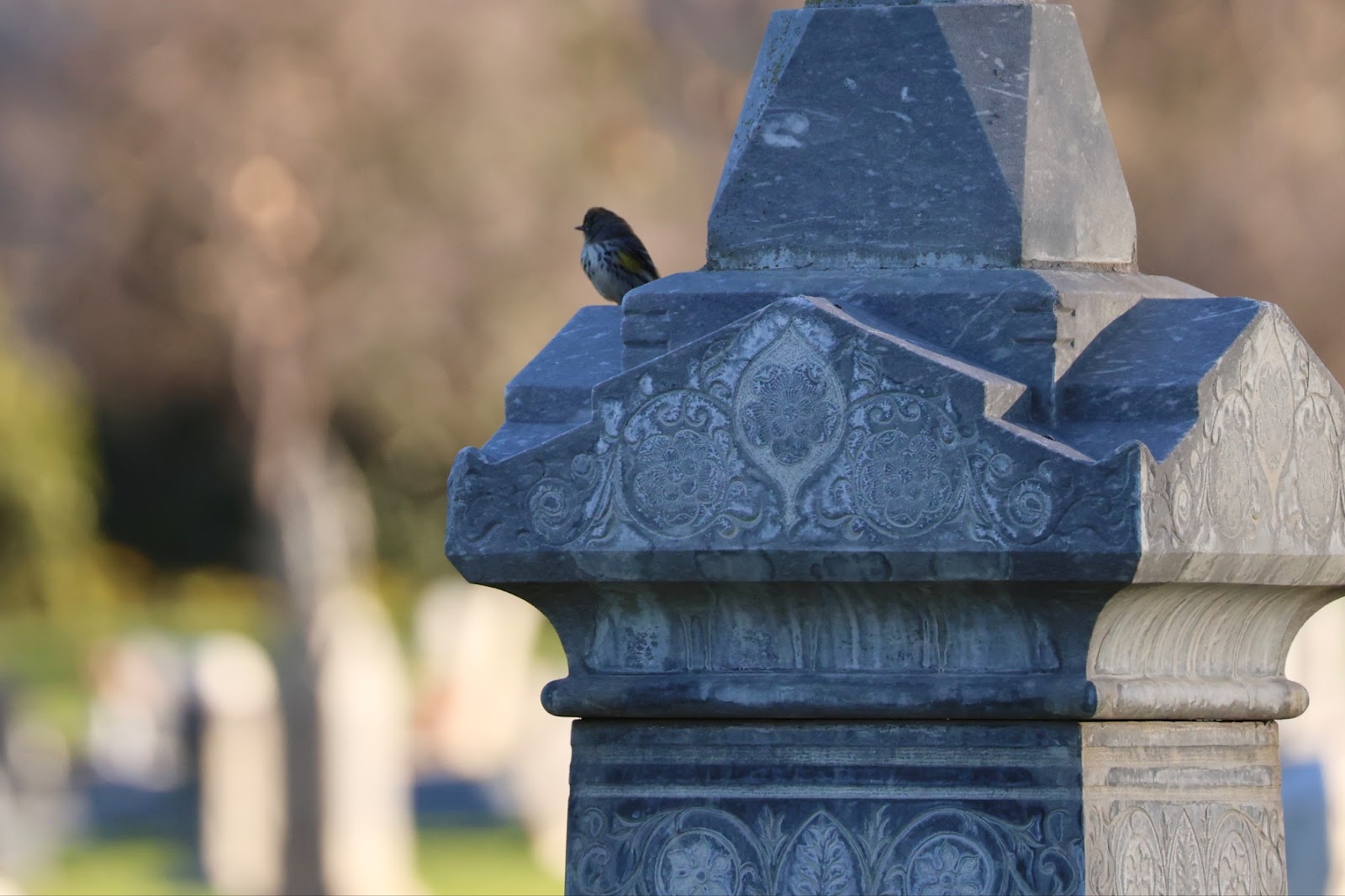
So, if you’re a seasoned birdwatcher or a budding naturalist, go visit a cemetery. Find a name, epitaph, or date that grabs your attention, and imagine a life for that human while you listen to birdsong and snap some photos. Think about love and loss, and remember that people throughout history have shared your hopes, ambitions, and fears. That person who died in 1892 could have been a fearless heroine, a tragic poet, or an anxious bureaucrat. They might have been just like your office nemesis or your very best friend.


